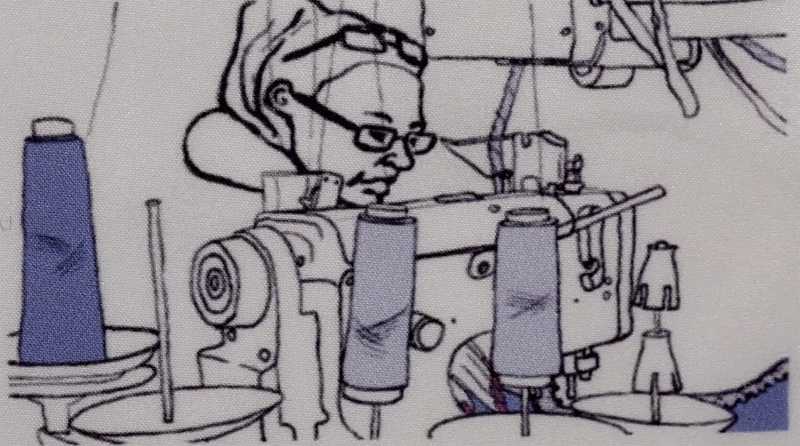In this blog, animator and curator Christopher Childs highlights the lack of short, animated work currently shown in UK cinema, and suggests several strategies programmers can implement to raise awareness of, and develop audiences for, auteur-driven short-form animation.
Where can one see animated films? Not Studio Ghibli or Pixar, but the work of auteurs creating exciting short-form cinema – a group loosely termed ‘Independent Animators’. While online platforms like Vimeo have provided these filmmakers a digital home, there are places where their work seems less welcome.
One example is UK cinemas. Outside of touring-programmes and film festivals, short animation has struggled to make it onto the screens of independent venues, let alone the wider multiplex circuits.
Paradoxically, the UK is considered a leading force of independent animation, home to auteurs such as Joanna Quinn (Affairs of The Art) or Lizzie Hobbs (I’m Ok) and nurturing exciting filmmakers through The Royal College of Art’s animation programme.
Mainstream methods of exhibiting animation have largely disappeared in the UK. Channel 4’s late-night ‘4mations’ slot, while unrelated to cinemas, allowed adult-orientated animation to be seen by general audiences. A few decades after its cancellation and there has not been a comparable example of animation being as visible on UK screens.
While the blame for this cannot fall on cinema programmers, tied up as it is with political shifts in how the arts are supported (or unsupported, in the case of UK animation), perhaps it’s necessary to evaluate how this situation has occurred. How can programmers bring independent animation back into the cinema?
A Creative and Disruptive Double-Bill
The whole spectrum of cinema audiences, from multiplex to independent, are largely unaware of animation directors working today. While animation festivals are full of enthusiasts eager to catch the new Sarina Nihei short or attend retrospectives of icons like Caroline Leaf, there is less enthusiasm for their work outside of these spaces. This means animation programmes can be a hard sell to cinema-goers, and a potential financial risk for venues.
When identifying this absence of interest in independent animation (or more accurately – awareness of its existence), we should consider how the dominant film canon can affect audiences’ interest in the medium, and how curators can encourage this interest through creative programming.
The Criterion Channel, a VOD service provided by the esteemed video-label, has taken a recent interest in animated film, placing the work within a wider context of independent cinema. Suzan Pitt’s celebrated short Asparagus (1979) was recently featured on the channel alongside David Lynch’s Eraserhead (1977), a double bill which originally toured cinemas on the release of Lynch’s film.

By placing Pitt’s film, known mostly within underground circles, alongside Lynch’s cult-classic, we allow general viewers to approach alternative animation via recognisable directors, encouraging audiences to see short animation and contextualising it within a larger understanding of film history.
This potential for pairing live-action cinema with animation could also be applied to new releases, creating links between emerging filmmakers in both mediums. Sophie Koko Gate’s short Slug Life (2018) would have made a fantastic double-bill alongside Jessica Hausner’s sci-fi feature Little Joe (2019); likewise pairing Jennifer Levonian’s poetic animations alongside work by Kelly Reichardt would perfectly highlight the thematic similarities between both directors.
When we consider both live-action and animation as equal members of independent cinema, it becomes an exciting challenge to consider ways of introducing both forms to audiences. Here are some suggestions.
The animated shorts in Wong Ping’s nightmarish Fables series (2018-2019), depicting a world of technological oppression and otherworldly corporations, could complement Brandon Cronenberg’s surveillance-state thriller Possessor (2020).

Stop-motion filmmaker Nicki Lindroth Von Bahr’s latest short, Something To Remember (2019), shares the existential dread of Swedish director Roy Andersson, and would have made a fitting companion-piece to his recent feature About Endlessness (2020).
Finding suitable animated shorts to screen alongside features would require curators who are knowledgeable of both mediums. While there are many programmers with such skills, we could also consider this an opportunity for cinemas to consult a variety of specialists in animated film. By using their expertise of the form, they could create regular, exciting and bold double-bill screenings.
A Retrospective in One Sitting
It’s easy to focus on the potential difficulties when programming short animation. For example, shorts programmes can involve chasing down screening rights from multiple distributors, sometimes requiring a larger budget when paying fees for each film. Yet here I wish to focus on the specific benefits of showing animation in cinemas, and how short-form work can provide interesting potentials often not available when screening features.
When I began a campus film club, screening independent short animation, I quickly realised that often the entirety of a filmmaker’s catalogue could be viewed in under an hour. This resulted in programming ‘short retrospective’ screenings, usually showing a director’s films in chronological order. This model of curation had multiple benefits. Firstly, as students, we could see the artistic development of an auteur’s work, watching their transition from graduate work to independently produced films. Secondly, we could be introduced to a complete filmography in a short space of time, while a retrospective of feature films would be spread out over several days. Being neither a double-bill screening or a themed programme, the two dominant ways of showing animation, this presents an interesting alternative that focuses on a specific artist.
This method of screening shorts has been used by animation festivals for decades, often to highlight an underappreciated figure within the artform. Strangely, it doesn’t seem to have been adopted outside of these events. As these programmes can fit neatly within a feature-length slot, it seems they could be well-suited to cinema schedules. The question of how to attract audiences for relatively unknown filmmakers is of course a challenge, but one for which past programmers have often found creative solutions.
The work being done
For curators considering how to attract audiences to animation screenings, or looking for examples of previous programmes, there is a wealth of inspiration from creative programmers in the UK and beyond. Here I wish to mention some of these figures, both for those looking to become more accustomed to animated film and to acknowledge the people already doing fantastic work.

Abigail Addison has been at the forefront of UK animation, partly through her work producing independent shorts, recently the festival-favourite documentary Bloomers (2019, Samantha Moore), and through her regular curation of animated film, often featured at the London Animation Festival. These programmes, often focusing on the work of woman in animation, continue to be fantastic resources for finding fresh, exciting filmmakers. Likewise, her work as a director of the agency Animate Projects has produced some of the most cutting-edge work in the UK. Exploring the agency’s online archive is a fantastic way of becoming acquainted with contemporary auteurs in animation. A similarly rich resource is the work of curator and animator, Edwin Rostron. Through his blog, Edge of Frame, Rostron features in depth interviews with experimental animators, featuring links within the article to their films. His work also extends beyond writing, curating screenings in London of alternative animation.
Taking these curators, and many others, as examples, we can see the exciting potentials of programming and celebrating short animation.

Christopher Childs is an animation filmmaker and artist based in Bristol, UK. His work has been screened internationally at festivals such as POFF Shorts, Kaboom Animation Festival and Manchester Animation Film Festival. He has also curated animation film screenings for The Barbican Centre and Bristol School of Animation (UWE).

